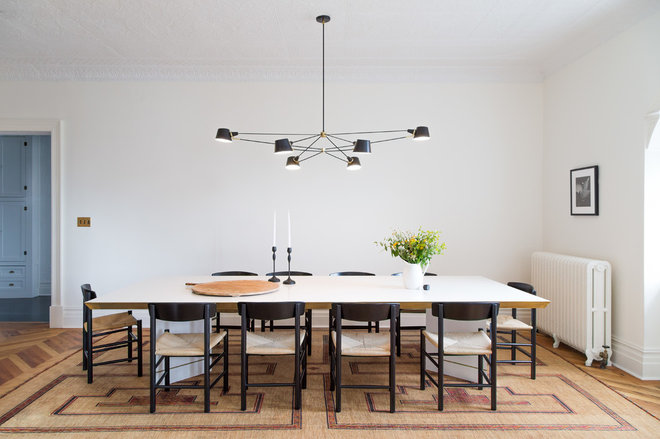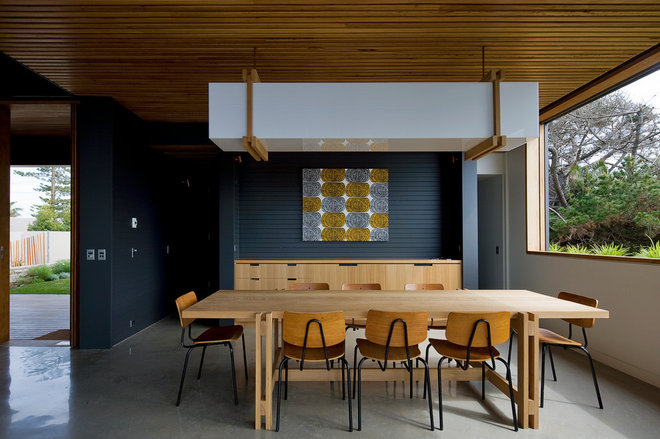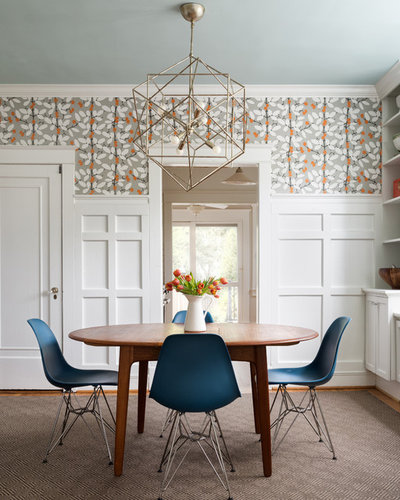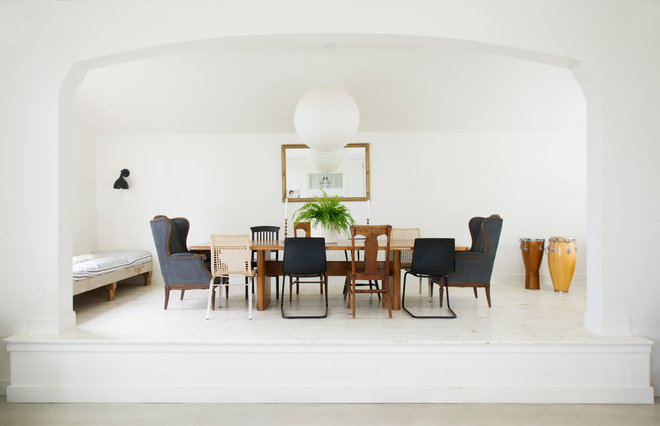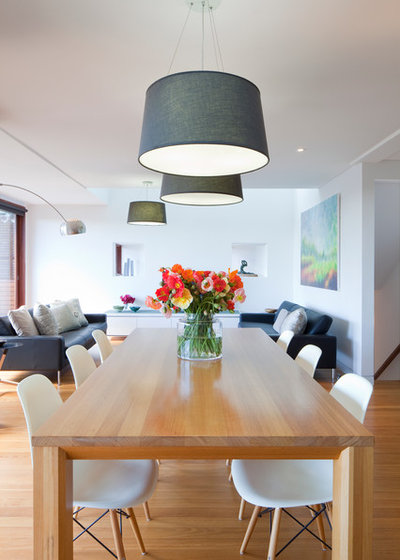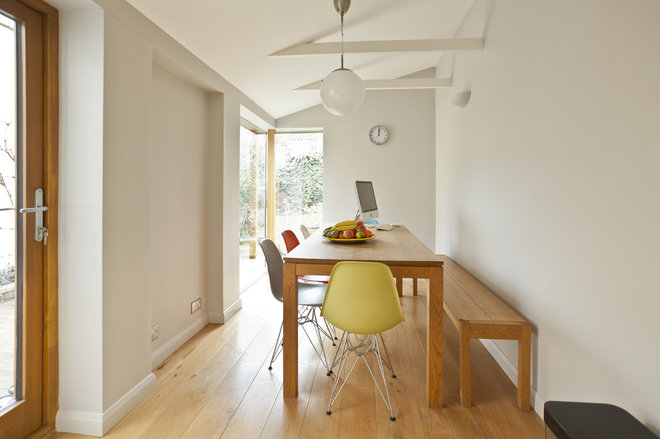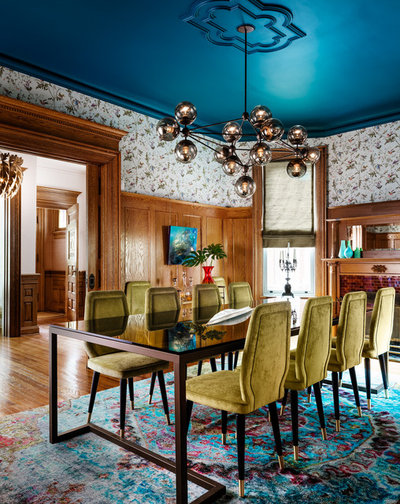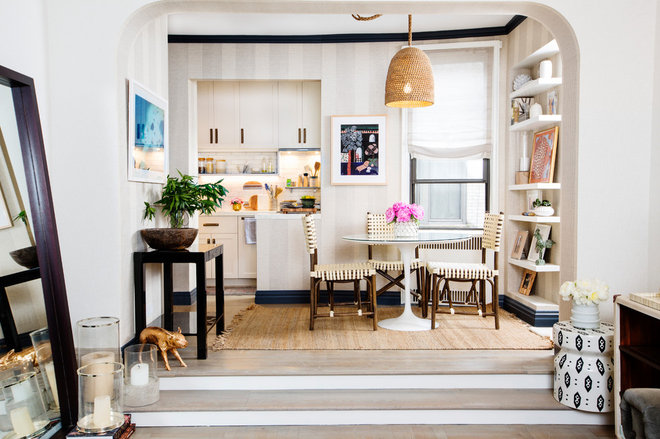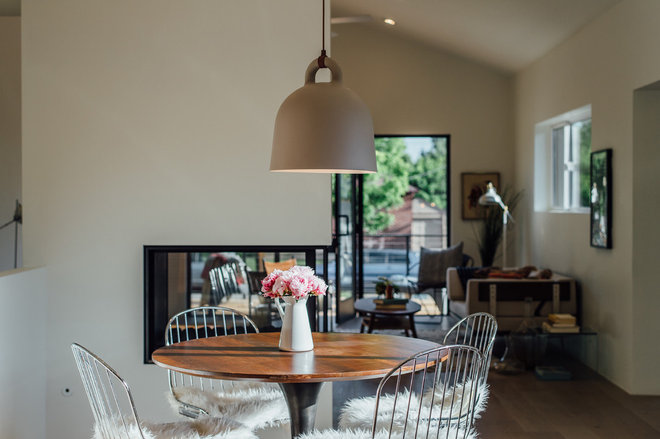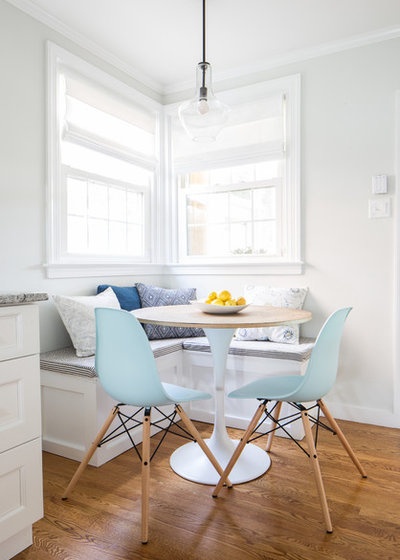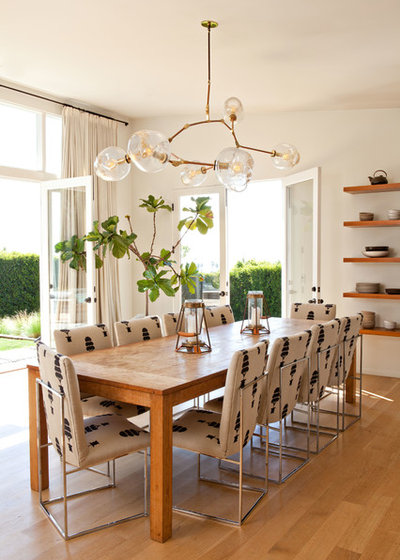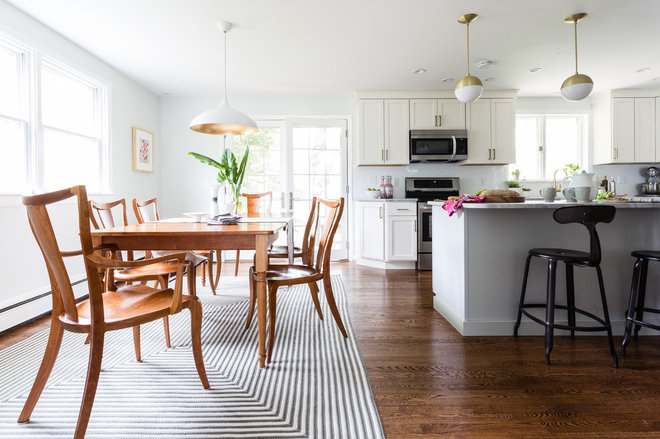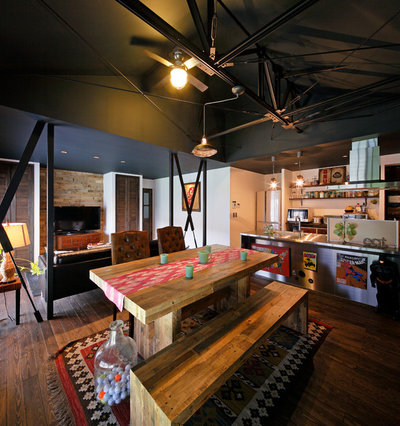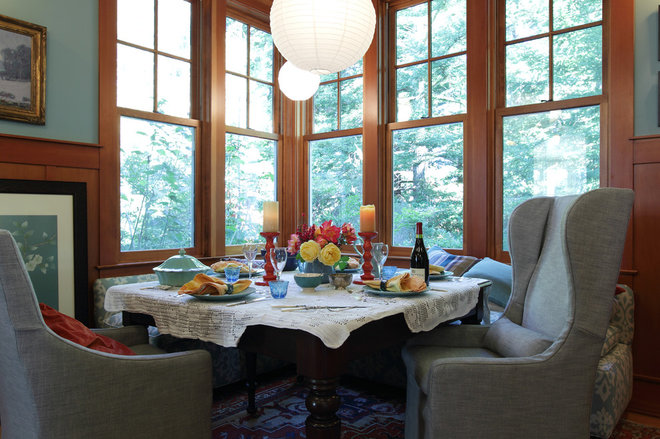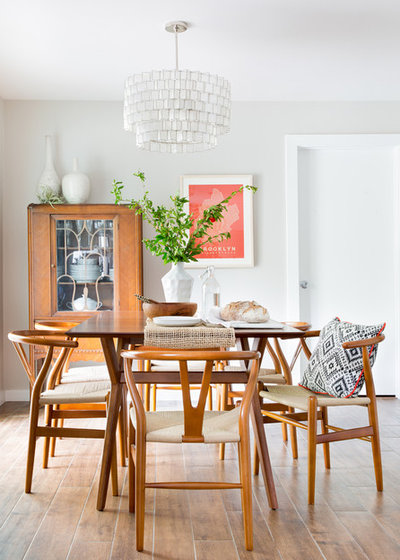How to Choose a Dining Table Light
Even if you aren’t relying on the dining table light for illumination, it can be another opportunity to show your design personality. “I usually think of the light fixture as the jewelry of the space,” says interior designer Larina Kase.
Table shape. While your dining table’s shape and size don’t have to determine your light fixture, they can help in the selection. “It does come down to personal choice, but I would recommend a round or hexagonal or bowl-shaped fixture for a round table and a square or rectangular or oval fixture for a rectangular table,” says architectural lighting designer Randall Whitehead.
You can also play around with scale and multiples. “If it’s a long table, we are seeing more double light installations, which look beautiful and provide balanced light. If it’s a smaller table, consider a larger pendant, as long as it doesn’t get in the way of functionality,” says interior designer Suzanne Manlove, principal designer at Arlington Home Interiors. “Nobody wants to bang their head on a light, no matter how pretty it is.”
In this traditional dining room in Arlington, Virginia, Manlove added some playful decorating touches, including the dining room light fixture. “I was looking for a larger statement light for this small dining room. I wanted to bring the viewer’s eye up to take advantage of the high ceilings, and have it be something you could enjoy from the adjoining living room and kitchen,” Manlove says.
She opted for a nearly 3-by-3-foot open geometric metallic fixture. “In this space, the dining room light serves as a decorative element that adds interest and scale to this small room. We like to have something shiny to catch your eye. This design works because it is large but open, so you can see through it to the wallpaper and the other rooms that connect to this room,” she says. They hung this light fixture higher than they normally would, above eye level, so that it wouldn’t be in the way visually of such a high-traffic room.
Shades can also alter the effect. “One of my favorite things are fixtures with perforated shades that project a pattern of light out onto the walls and ceiling,” Whitehead says.
See drum pendants on Houzz
Light fixture: Ikea
Light fixture: Roll & Hill
Find a designer to help you select your light fixtures
In this New York kitchen renovation, interior designer Raychel Wade swapped a homeowner’s antique chandelier for an updated pendant. “It was important for us to use a more natural material,” as opposed to metal and glass, she says. “This pendant warms up the space and creates a focal point without overwhelming the entire room.” It rounds out the warm textures and colors of the surrounding furniture and finishes.
Light fixture: Green Oaks, Palecek
Light fixture: Bell, Normann Copenhagen
Light fixture: Sutton; Birch Lane; see more glass pendants
“We’d lusted over the light fixture for a long time before putting it in this room,” says designer Saffron Case of Saffron Case Homes.
“The chandelier is beautifully articulated, which I think works well with the crudeness of the wood table, and the hanging shape — almost like a mobile — is magical in room like this.”
A round metallic light fixture hangs over the dining table in this home outside Philadelphia. “We selected this light to make a statement,” Kase says. “We wanted a clean, modern design but a beautiful light fixture that would warm up the space. The white exterior and gold interior achieve this balance of making a statement in a calming way, and the gold is like having sunshine shine down.”
The metal finishes of adjacent light fixtures don’t have to dictate what the pendant or chandelier will be. “I don’t care for matchy-matchy,” Saffron Case says, “so I don’t worry about whether the metal finishes match.”
Says Larina Kase: “It can be fun to have one finish on the sconces and one finish on the chandelier.”
Dining light fixture: Agnes in large, Aerin for Visual Comfort
Adding or relocating a ceiling outlet. There are a couple of options for those who don’t have a ceiling outlet at all or who have a ceiling outlet that isn’t in the right place. For a more affordable option, you can choose a hanging fixture with an attractive cord and either hang the light fixture on a hook or even use a wall outlet.
Otherwise, an electrician can add or relocate the light outlet for you. “[It’s] always doable,” says Ernie Reda, owner and operator of Reda Electric. Regardless of whether or not you are working below an attic space or another floor, a professional should be able to add or relocate wiring for a hanging light fixture.
Find an electrician near you
How to Install a Dimmer Switch
Where to hang: In an enclosed dining room, the dining table often sits in the center of the room. With open-plan or multiuse rooms, that’s not always the case. Regardless, aim to center the light fixture over the dining table.
How high: Each designer has his or her own preference, and each dining room is unique and may call for something slightly different, but most experts suggest suspending the light fixture so that its bottom hangs 28 to 36 inches above the dining table. Rooms with taller ceilings can support light fixtures hung on the higher end, while those with standard 8-foot-tall ceilings might call for fixtures hung closer to 30 inches from the table.
How big: Look at any collection of dining room photos, and you’ll see that there’s no one-size-fits-all for the light fixture. Some feature one oversize fixture, while others use two or more smaller fixtures. A lot of it comes down to preference, but there are a few formulas that can be applied to help you at least get started with your sizing, especially if you’re opting for a single light fixture over the table.
- Add the length and width of the room together in feet and then use the sum, but in inches, to determine the fixture size. “If you have a room that’s 10 feet by 12 feet, then the diameter [of the] fixture should be in the 22-inch range,” Whitehead says. “Personally, I tend to scale up a bit and would look at something that would be 24 inches in diameter.”
- Use the table size to help determine the fixture size. The American Lighting Association advises that a light fixture should be 12 inches narrower (6 inches on each side) than the smaller side of the dining table. For example, a table that is 48 inches wide by 72 inches long should have a light fixture that is about 36 inches wide.
